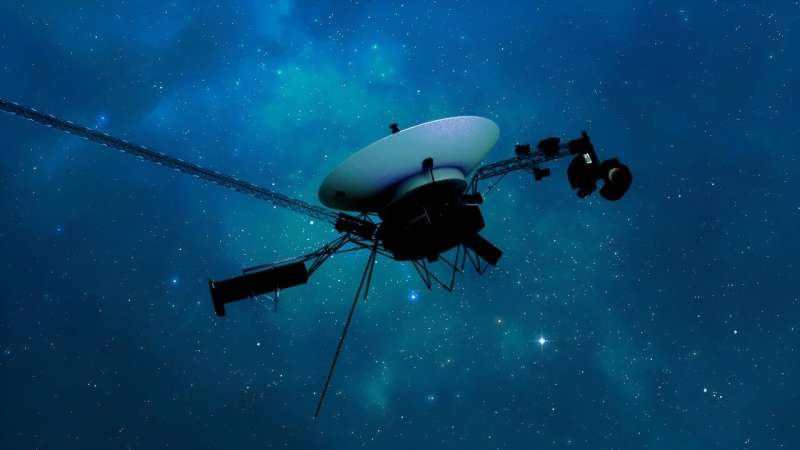Artist’s concept depicting NASA’s Voyager 1 spacecraft, which entered interstellar space, or the space between stars, in 2012.
For the first time since November, NASA’s Voyager 1 spacecraft has returned usable data on the health and status of its onboard engineering systems. The next step is to enable the spacecraft to start returning scientific data again. The probe and its twin Voyager 2 are the only spacecraft to fly in interstellar space (the space between stars).
Voyager 1 stopped sending readable science and engineering data to Earth on November 14, 2023, although mission controllers could tell that the spacecraft was still receiving its commands and otherwise operating normally. In March, the Voyager engineering team at NASA’s Jet Propulsion Laboratory in Southern California confirmed that the problem was related to one of the spacecraft’s three onboard computers, known as the Flight Data Subsystem (FDS). FDS is responsible for packaging scientific and engineering data before sending it to Earth.
The team discovered that a single chip responsible for storing part of the FDS memory, including some of the FDS computer software code, was not functioning. The loss of this code renders scientific and engineering data unusable. Since the chip could not be repaired, the team decided to place the affected code elsewhere in the FDS memory. But no location is large enough to accommodate a complete portion of the code.
Therefore, they devised a plan to divide the affected code into multiple parts and store these parts in different locations in FDS. In order for this plan to work, they also need to adjust these parts of the code to ensure that they still work as a whole. Any references to the code location elsewhere in FDS memory also need to be updated.

Members of the Voyager flight team celebrated in a conference room at NASA’s Jet Propulsion Laboratory on April 20 after receiving the first data on Voyager 1’s health and status in five months. -Caltech
The team first singled out the code responsible for packaging the spacecraft’s engineering data. They sent it to its new location in FDS memory on April 18th. Arriving back to Earth. When the mission team heard back from the spacecraft on April 20, they found that the modifications had worked: For the first time in five months, they were able to check the health and status of the spacecraft.
Over the next few weeks, the team will reposition and adjust other affected parts of the FDS software. This includes a section that will begin returning scientific data.
Voyager 2 continues to operate normally. The twin Voyager spacecraft have been launched for more than 46 years and are the longest-running and most distant spacecraft in history. Before embarking on interstellar exploration, both probes flew by Saturn and Jupiter, while Voyager 2 flew by Uranus and Neptune.
citation: NASA Voyager 1 continues to send engineering updates to Earth (2024, April 22), Retrieved April 22, 2024, from https://phys.org/news/2024-04-nasa-voyager-resumes- earth.html
This document is protected by copyright. No part may be reproduced without written permission except in the interests of fair dealing for private study or research purposes. Content is for reference only.
#NASA #Voyager #resumes #sending #engineering #updates #Earth
Image Source : phys.org
